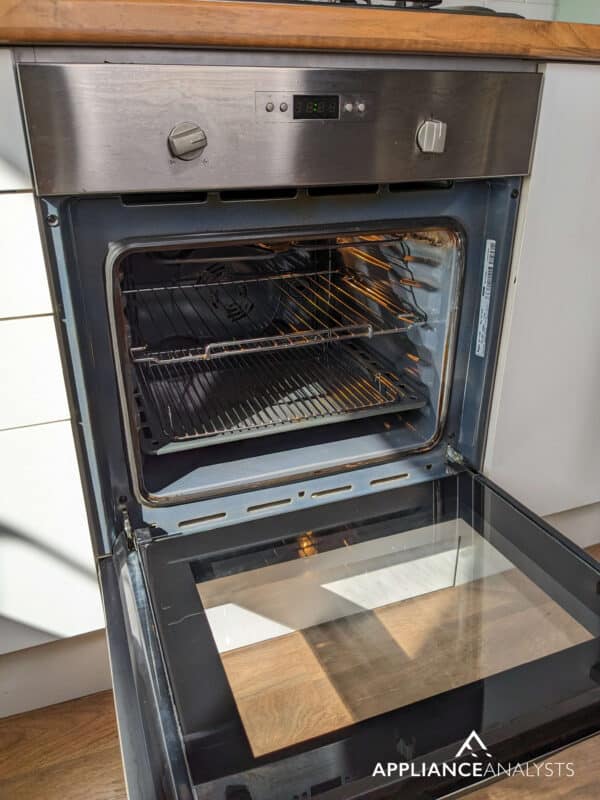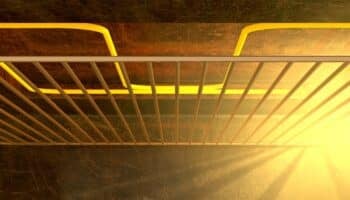A food dehydrator is one of the many wonderful appliances inventors have added to our kitchen. If you’re into food drying, you know how important such an appliance is.
But how does a food dehydrator measure up against an oven? Which one is better for drying food?
In the following article, I’ll compare food dehydrators with ovens and help you see whether the former is worth it compared to the latter.
Are you ready? Let’s dive in!
How Does A Food Dehydrator Work?
A food dehydrator removes moisture from food. Food dehydrators combine heat and airflow to dry out the food items you put in them.
Food dehydrators employ the oldest method of food preservation. Typically, food has a water content of 50% to 80%, which can lead to it spoiling quickly. When the dehydrator removes the moisture, the food becomes lighter, greatly reducing cooking time.
A food dehydrator can cook food at a constant temperature and also provide it with sufficient air to keep it from hardening. If a higher temperature is applied, the food can get hard but stay moist inside, which, in my experience, will spoil it quickly.
Can You Use An Oven As A Dehydrator?
Short answer? Yes, you can.
An oven can dehydrate your food and make it healthier. You can make do with an oven if you don’t have an electric dehydrator.

You’ll need to cut your food into evenly thick slices with a slicing tool or knife to ensure all of it is completely dried.
In the oven, you can dehydrate foods at temperatures ranging from 140 to 200 degrees Fahrenheit to help preserve meat, fruits, and vegetables for longer.
However, from what I’ve seen, using an oven as a dehydrator can take almost twice the time to cook the food fully.
Setting the right temperature is crucial to ensure all the moisture is removed from your food and it’s cooked completely. You can set the temperature using the oven’s thermostat.
An oven lacks the air circulation that a food dehydrator provides. You must keep the oven door open 2 inches and place a fan near it to direct the heat outwards.
How Much Does A Food Dehydrator Cost?
There are different types of food dehydrators out there that let you dehydrate food.
Depending on size and features, you can find a food dehydrator for anywhere between $30 and $500. You must consider your needs, as you don’t want to pay for unnecessary bells and whistles.
Some of the features to look out for are:
Size and Space
The larger the food dehydrator, the more food it can accommodate and the pricier it will be. However, you can find stackable food dehydrators that take up very less space.
Expansion Features
Some food dehydrators have expansion features that allow you to add more trays to the device to cook more food at the same time and serve larger groups of people. Such dehydrators will be more expensive than non-expandable ones.
Material Quality
The quality of the material from which the dehydrator is made also greatly affects its price. Normally, food dehydrators are made from either plastic or some metal. Plastic versions are more affordable, but I find that they’re also less durable since they can’t handle high temperatures, as well as the metallic alternatives.
Thermostat
Not all food dehydrators have a built-in thermostat, so this also affects their cost. Food dehydrators with thermostats are more useful, as they help you set the exact temperature for cooking your favorite foods and can help prevent overheating.
As you can imagine, food dehydrators with a thermostat are more expensive than those without one.
Timer
If your food dehydrator also has a built-in timer, it’ll help you cook your food easily while you complete other chores, resulting in perfectly cooked meals. However, food dehydrators with timers come with a larger price tag than those without one.
What Types Of Foods Can You Use A Dehydrator For?
A food dehydrator allows you to dry numerous types of foods easily and quickly. Some of the best foods to dry are:
Meat
With a food dehydrator, you can easily cook your favorite meat dishes. You can add your favorite herbs and spices, as well as sauces. Then, you can bake the meat at a low temperature of approximately 170 degrees Fahrenheit to cook it properly.
Fruits
You can also dehydrate and cook various fruits in the food dehydrator. Some of the fruits include bananas, apples, strawberries, melons, and much more. You can easily add more ingredients to the fruits, such as cinnamon, honey, or nutmeg.
Vegetables
You can prepare numerous vegetables in the food dehydrator, such as peas, bell peppers, zucchini, sweet potatoes, and tomatoes. Each vegetable requires a different temperature, so make sure you know what it is.
Herbs
You can try various recipes containing herbs and powders in your food dehydrator, such as basil, rosemary, garlic powder, ginger powder, etc. Once the herbs are dried up, you can store them in airtight containers and use them for cooking and seasoning.
Other Types of Food
Other foods you can prepare in your dehydrator include but are not limited to eggs, salads, yogurt, vegetable curry, granola bars, and many other fantastic recipes.
Is A Food Dehydrator Worth It?
Another short answer – yes!
A food dehydrator brings you thousands of food choices and recipes and helps you cook them much faster. Food dehydrators also kill the bacteria present inside food. If you’re on a certain diet, you can quickly prepare different healthy recipes.
Let me spell out some more reasons why a food dehydrator is worth it:
Healthy Eating
Using a food dehydrator makes it much easier for you to incorporate healthy food into your diet.
Raw Food Options
Food dehydrators also allow you to enjoy your favorite fruits, vegetables, and other raw foods.
Most recipes require temperatures ranging from 115F to 140F. Adding fruits and vegetables to your meals was never easier or healthier!
Cost-Effectiveness
If you have a food dehydrator, you can buy your favorite foods in bulk when they’re on sale and then can dry and preserve them for later.
Fun for the Kids
Make your kids join the fun of the whole food drying experience!
It’s a fun and educational activity. Your kids will learn to cook and serve different foods on a tray—a great way to teach your kids about the nutritional value of different foods.
Preserve Food for Longer
Lastly, a food dehydrator helps preserve your food for longer. You can easily freeze or refrigerate the dried food for later. Dried foods last longer when preserved.

Are Food Dehydrators Expensive To Run?
We’ve already discussed the cost of buying a food dehydrator. Let’s talk about its energy consumption and costs.
Before I dive into the details, keep one thing in mind. The size of your dehydrator has a major impact on its electricity costs.
If your food dehydrator runs on 500W, it will consume less power than a dehydrator with a power rating of 750W.
Let’s say you have a 450W dehydrator. As of 2023, the average electricity cost is $0.13 per KWh, which means that running the food dehydrator for an hour will cost you $0.06.
As the power increases, so does the cost, but ultimately, food dehydrators aren’t too expensive to run.
Food Dehydrators vs Ovens
A food dehydrator is not only cost-effective but also helps you cook food in a nutritious and healthy way.
Food dehydrators provide you with endless food options without expensive electricity bills. The key is to know which temperatures to cook each food at.
Although ovens are also great and versatile, they cannot compete with food dehydrators in many areas, such as food preservation. So if you need special features an oven can’t provide, a food dehydrator will make you very happy.
Thanks for reading. If this article was useful and answered your questions, please check out our other resources and free guides below, and consider subscribing to our newsletter.
Have a great day!
-Craig.







